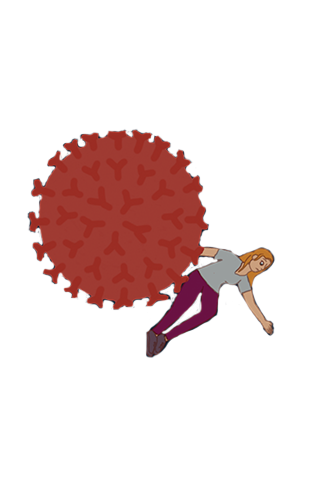After four years of playing AYSO soccer I scored a total of zero goals. As the coach, my dad rotated me through forward, midfield and defense, yet I revealed no prodigious talent in any position. In my first 15 minutes as goalie I let the ball pass by me eight times until I took one straight to the face and Coach Dad led me off the field with tears charging down my cheeks and a long strand of snot dangling from my nose.
My lack of athletic prowess followed me through grade school, and I became accustomed to the deflated expressions of my peers when I was assigned to their team. Yet every spring, I would also witness a look of mild shock on my gym teacher’s face when I would finish the mile just behind the soccer player, do just as many push-ups as the basketball player, and attain a sit-and-reach score far surpassing them both. I have been a dancer since age four and had my highly athletic passion always been accepted as a sport, I can’t help but imagine a very different childhood for myself.
It is true that unlike America’s favorite athletes, jazz and ballet dancers do not engage in face-offs in which their skills are directly compared in the same match. But if we were to exclude dance from being considered a sport because of this, we would also have to exclude gymnastics, diving, weightlifting, ice-skating and several track and field events including shot put, pole vault and high jump. Tell any one of those competitors that they are not considered to be an athlete and see if you come out of the conversation alive.
Competition dance, including GBS Poms, features a uniform scoring rubric that refutes the argument that dance is too qualitative to be an objectively judged sport. The Universal Dance Association judges dance teams on a 100-point system broken into four categories: choreography, technique, group execution and overall effect.
According to junior Gabriella Oppenheimer, a Varsity Pom, there are two ten-point subcategories within overall effect in which judges exercise their own personal preference. However this subcategory is only 20 percent and serves as an added layer of challenge as well as a way for judges to keep competitors in line, like a referee on the football field.
To a Pom, executing a flawless turn is very similar to shooting a ball into a hoop in that it requires both a great deal of practiced skill and a sprinkling of luck. The difference is that in basketball, an unskilled shot will not lose the team points. In dance, a turn with a bent standing leg or a working leg that is not pulled high enough will result in a point loss. This should not demote dance to a non-sport status, but elevate it as a more challenging sport.
Although non-competition dance is undoubtedly a fine art that requires creatively gifted dancers and choreographers, I see no reason why it can’t be defined as both an art and a sport. Excluding non-competition dance from the sport family implies a level of physical rigor more aligned with holding up a paintbrush than playing football or competition dancing.
In reality, a professional dancer’s body serves as visible proof of such rigor: thick calluses that build on the soles of the feet from dancing without shoes, an incredibly muscled physique from hours of repetitive training and nearly inescapable knee injuries that develop from overuse of the external rotators.
The purpose of this argument is not to split hairs, but to define dance in such a way that it can be fully appreciated. In Glenview, ballet is an activity for young girls dressed head to toe in pale pink who quickly outgrow their tutus. In suburban areas like our own, almost every young boy participates in sports like football, basketball, hockey or soccer, but few parents enroll their son in ballet.
There is a certain delicate, effeminate stereotype that clings to dance and dissuades fathers from buying their sons their first pair of tights. However, being exposed to dance from a young age instills a love of movement, appreciation for aesthetics and a headstrong confidence while performing in front of an audience. If dance was considered athletic enough to be defined as a sport, there might be stadiums filled with people coming to see the ballet, and thus the values dance offers would enrich a larger society instead of merely a small niche.







